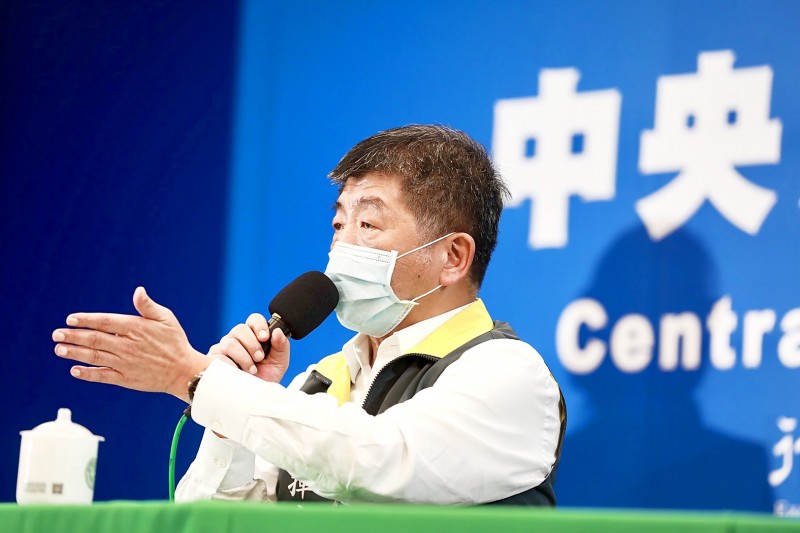《TAIPEI TIMES》 CECC outlines three biggest challenges

Minister of Health and Welfare Chen Shih-chung speaks at a news conference at the Central Epidemic Command Center in Taipei yesterday. Photo: CNA
MASKS, BORDERS, SHIP: The center said that mask supplies were stabilized, abrupt border control changes had been accepted and the ‘Panshih’ problem was rectified
By Dennis Xie / Staff writer, with CNA
The three biggest COVID-19 challenges the Central Epidemic Command Center (CECC) has faced were stabilizing mask supplies, border controls for people arriving from Europe or the US, and the cluster infection on the Panshih (磐石) navy supply ship, Minister of Health and Welfare Chen Shih-chung (陳時中) said yesterday.
Chen, who heads the center, told an international news conference organized by the Ministry of Foreign Affairs in Taipei on Wednesday that the three disease-prevention areas were the ones that could be improved the most.
He made the same remarks at the CECC’s news briefing yesterday.
The mask shortage in January and February caused by panic buying as the outbreak escalated over the Lunar New Year holiday caught the center off guard, he said, adding that it had to release masks reserved by the government for emergency purposes to meet demand.
Inventory replenishment could not be achieved amid the holidays, when production was halted, he said.
The center on Feb. 6 rolled out a mask-rationing system, which limited the number people could buy to two per week, he said.
With rationing and enhanced production, it took about a month before supplies stabilized, he said, adding that supply has remained ahead of demand since.
The second challenge was to stop imported COVID-19 cases from Europe and the US, where infections rose “abruptly” and “exponentially,” Chen said.
Although the center had anticipated a rapid increase in COVID-19 cases in Europe, it did not predict that the escalation would be as soon as early March, prompting it to place an abrupt entry ban on foreigners from March 14, he said.
The sudden decision inconvenienced some travelers, he said.
Taiwanese who returned from European nations not previously subject to quarantine rules were ordered to do so to minimize the risk of community infection, he said.
Some of those people tested positive for the novel coronavirus, but thanks to their full cooperation, the “loopholes” were closed, he said.
The Panshih situation was the third challenge, Chen said.
The vessel was one of three in a “Friendship Flotilla” that visited Palau from March 12 to 15, with several navy cadets found to have contracted COVID-19, but they were only ordered into quarantine after they had disembarked.
As of Tuesday, 36 military personnel aboard the ship had tested positive for the virus.
A lack of sophisticated diagnostic equipment was why doctors onboard failed to promptly diagnose the infections, Chen said.
New equipment has been added to military vessels to prevent a recurrence, he said.
新聞來源:TAIPEI TIMES



















